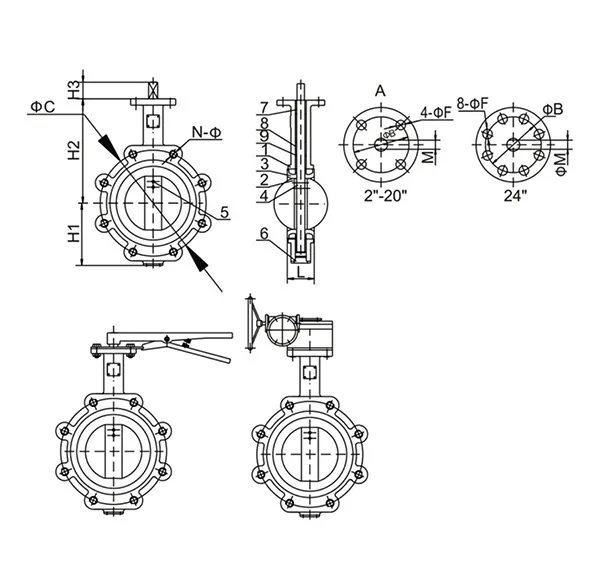Nov . 10, 2024 10:41 Back to list
Single Plate Check Valve Design and Applications in Fluid Control Systems
Understanding Single Plate Check Valves Functionality and Applications
A check valve is an essential component in various fluid systems, ensuring that the flow of fluid occurs in a single direction. Among the different types of check valves, the single plate check valve is gaining significant attention due to its simple design, efficiency, and reliability. This article will explore the functionality, advantages, and common applications of single plate check valves while also addressing their maintenance and installation.
What is a Single Plate Check Valve?
A single plate check valve, often referred to as a spring-loaded check valve or simply a one-piece check valve, is designed with a single disc or plate that pivots on a hinge or is guided by a pin. This disc is responsible for opening and closing based on the pressure differential between the inlet and outlet of the valve. When fluid flows in the designated direction (inlet to outlet), the pressure difference overcomes the force of any springs (if present), allowing the disc to open fully. However, when fluid attempts to flow backward, the pressure difference forces the disc to close, preventing reverse flow.
Key Features and Advantages
1. Compact Design One of the most significant advantages of single plate check valves is their compact design. They require less space compared to traditional full-flow check valves, making them an ideal choice for installations with limited room.
2. Reduced Weight Single plate check valves are typically lighter than their multi-plate counterparts. This attribute not only simplifies handling and installation but also reduces the need for heavy support structures in piping systems.
3. High Efficiency The simplistic design results in lower resistance to flow, thus enhancing the overall efficiency of the fluid transport system. The streamlined profile allows for higher flow rates while minimizing energy consumption.
4. Ease of Maintenance Due to their simple construction, single plate check valves are easier to maintain than more complex designs. Any required inspections or repairs can often be performed quickly without extensive disassembly.
5. Versatile Applications Single plate check valves are suitable for a variety of applications, including water supply systems, wastewater treatment plants, and HVAC systems. They can handle various fluids, including clean and dirty water, chemicals, and other industrial fluids.
single plate check valve

Common Applications
Single plate check valves find their place in numerous industries and applications
- Municipal Water Supply In municipal water supply systems, these valves prevent backflow, ensuring that potable water remains uncontaminated by ensuring that water can only flow in one direction.
- Pumping Stations In pumping stations, single plate check valves help prevent water hammer and protect pumps from reverse pressure, thus extending the life of the equipment.
- Industrial Processes In many industrial setups, these valves are used to maintain unidirectional flow in pipelines transporting chemicals, oils, and slurries.
- HVAC Systems HVAC installations utilize single plate check valves to ensure proper air and fluid flow, optimizing temperature control and improving system efficiency.
Installation and Maintenance Considerations
Proper installation is crucial for the optimal performance of single plate check valves. They should be installed in the correct orientation, as indicated by the flow direction arrows on the valve body. Regular maintenance checks are advisable to ensure that the disc operates smoothly and that no debris is blocking its movement. Lubrication of hinge pins, when applicable, can also prolong the life of the valve.
Conclusion
In summary, single plate check valves are invaluable components in various fluid systems, providing essential functions such as preventing backflow and optimizing energy efficiency. Their compact design, ease of maintenance, and versatility make them a popular choice across many industries. Understanding their functionality and applications can help engineers and maintenance personnel ensure that these critical components operate reliably within their systems. As technology continues to evolve, the role of these check valves is likely to expand, reinforcing their significance in fluid dynamics.
Share
-
Reliable Wafer Type Butterfly Valves for Every IndustryNewsJul.25,2025
-
Reliable Flow Control Begins with the Right Ball Check ValveNewsJul.25,2025
-
Precision Flow Control Starts with Quality ValvesNewsJul.25,2025
-
Industrial Flow Control ReliabilityNewsJul.25,2025
-
Engineered for Efficiency Gate Valves That Power Industrial PerformanceNewsJul.25,2025
-
Empowering Infrastructure Through Quality ManufacturingNewsJul.25,2025